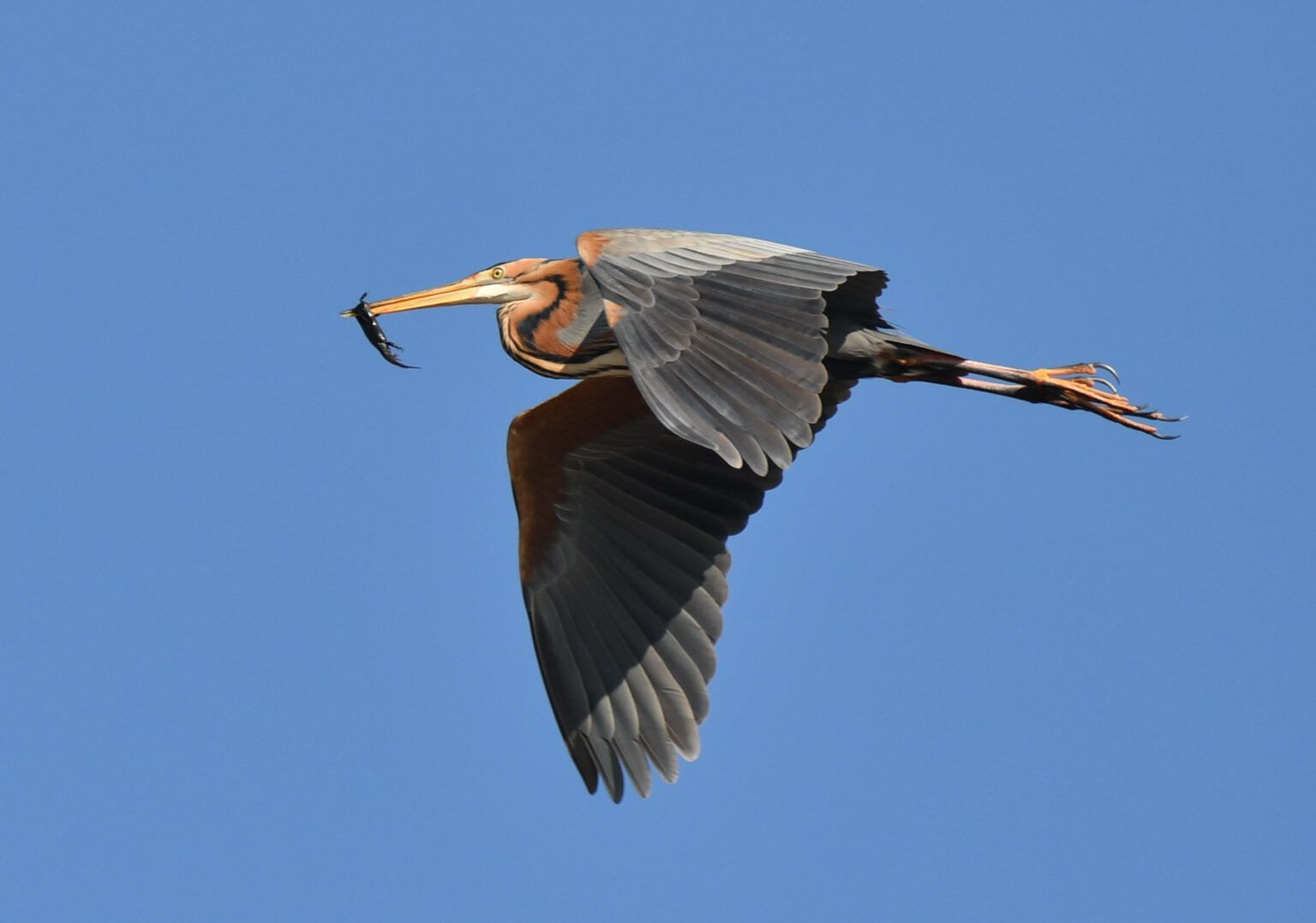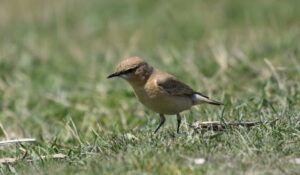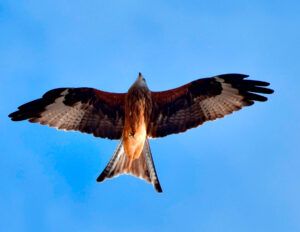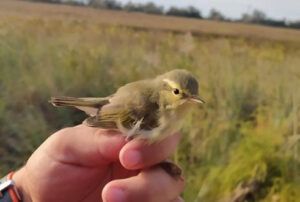The Purple Heron (Ardea purpurea) is a wading bird in the heron family Ardeidae, breeding in Africa, central and southern Europe, and southern and eastern Asia. The European populations are migratory, wintering in tropical Africa; the more northerly Asian populations also migrate further south within Asia. It is a rare but regular wanderer north of its breeding range. Description The Purple Heron is a large bird, 78–90 cm (31–35 in) in length with a standing height of up to 94 cm (37 in) and a 120–152 cm (47–60 in) wingspan. However, it is slender for its size, weighing only 0.5–1.35 kg (1.1–3.0 lb). It is somewhat smaller than the Grey Heron, from which it can be distinguished by its darker reddish-brown plumage, and, in adults, darker grey back. It has a narrower yellow bill, which is brighter in breeding adults. 
There are three or four subspecies: * Ardea purpurea purpurea Linnaeus, 1766. Africa, Europe north to the Netherlands, and southwestern Asia east to Kazakhstan. * Ardea purpurea bournei (de Naurois, 1966), Bourne’s Heron. Cape Verde Islands (included in purpurea by some authors, but treated as a distinct species Ardea bournei by some others). * Ardea purpurea madagascariensis Oort, 1910. Madagascar. * Ardea purpurea manilensis Meyen, 1834. Asia from Pakistan east to the Philippines and north to Primorsky Krai, Russia.
The Purple Heron breeds in colonies in reed beds or trees close to large lakes or other extensive wetlands. It builds a bulky stick nest. It feeds in shallow water, spearing fish, frogs, insects and small mammals. It will often wait motionless for prey, or slowly stalk its victim. It tends to keep within reedbeds more than the Grey Heron, and is often inconspicuous, despite its size. It has a slow flight, with its neck retracted. 
This is characteristic of herons and bitterns, and distinguishes them from storks, cranes and spoonbills, which extend their necks. The long neck of Purple Heron looks particularly snake-like, with more of an S-shape in flight. The call is a loud croaking “krek”. The Purple Heron is one of the species to which the Agreement on the Conservation of African-Eurasian Migratory Waterbirds (AEWA) applies.
Very common bird in the Danube Delta – Romania.
photo: Mihai BACIU







